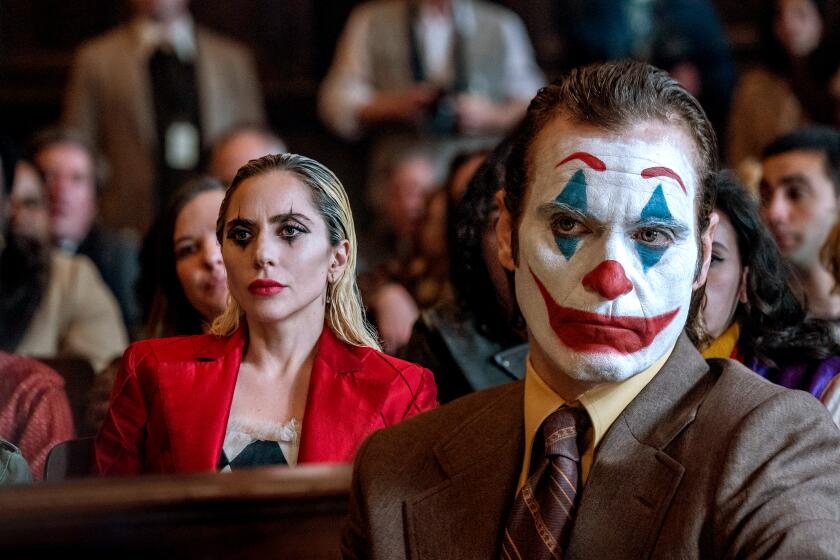‘Pose,’ ‘Succession,’ ‘This Is Us’: Plan out a story arc or just go with the flow?
When Dan Fogelman originally sat down with NBC executives to discuss what would become “This Is Us,” he came prepared. Walking them through the first few seasons of the show, he even suggested that a major character’s death could time out as a post-Super Bowl episode. (It did.) And if you ask him today if he knows where his hit series is headed, his answer is a resounding yes. He’s even got 35 pages of the final episode — some three seasons away — written out.
But that makes him a rare beast on broadcast TV. “I’ve made a lot of two-year shows,” he says. “The odds of being able to stay on the air long enough to execute a long-term plan are so slim, it feels like a fool’s errand.”
Such is the rock and hard place between which many series creators find themselves these days: Plan your story in great detail into the future so when the series concludes you’ll have an emotionally satisfying farewell? Or fly by the seat of your pants — since few shows get much of a heads-up before the ax falls?
For each show, it’s a different story, with decisions often bound up in a combination of genre, platform and vision. Or lack thereof: Chuck Lorre, creator and showrunner of “The Kominsky Method,” keeps planning as bare-bones as possible for his Netflix series, by design.
“Absolutely that was some of the appeal for going to Netflix,” Lorre says. “To sit down in a room by myself and see what might happen. I know what the show’s about. Beyond that, the road is open.”
Sitcoms in general tend to rely less heavily on big-picture story arcs that require intricate outlines. Steve Levitan, co-creator (with Christopher Lloyd) of “Modern Family,” says they plot out a season at a time, with each season having a single major arc or two — Mitch and Cam’s wedding, Haley’s pregnancy.
“We come from and always admired shows where you can just tune into an episode and not be lost where you are, have a really good laugh and get on with your day,” Levitan says. “As opposed to a show where you need a ton of backstory to get into it.”
“You need to leave yourself space to be nimble,” says “Killing Eve” executive producer Sally Woodward Gentle. “For Season 1 we knew the midpoint, and we knew vaguely where we wanted to take the women by the end. But you then color in as you go. Characters grow and mutate as you write them, and also as actors inhabit them.”
The ability to be fluid is critical, says Jesse Armstrong, creator and showrunner of “Succession.” “I could pitch you the shape of the season — but no plan survives contact with the enemy,” he says. “How do you write without an idea; how do you get an idea before you start to write? Which part of the process comes first — the shape or the texture?
“If you promise a big idea or a twist, a show has to need to know where it’s going,” he adds. “Different shows make different promises to the audience.”
“We have to address the [credibility] of the world we’ve set up,” says “Animal Kingdom” and “Shameless” executive producer John Wells, who’s been writing and producing for TV series since the 1990s. “The more high-concept the show is, the harder it is to adjust for that. Usually, I have a strong sense of where I want the characters to end up and thematically where I want a show to end up.”
One series that has crafted an overall tension while still embedding season arcs in its planning is “The Blacklist.” Creator and co-showrunner Jon Bokenkamp says he’s always had “a 100% endgame plan from the beginning. I don’t know how to tell a story without knowing where the endpoint is.”
Deep, seasons-long plotting wasn’t always the norm, but TV has evolved since the 1980s, when shows like “Hill Street Blues” began to link episodes in a way that suggested a bigger story was at play. With premium cable series, beats established to make room for commercials disappeared, and the storytelling shifted again.
Today, high-end series such as “Game of Thrones” and many streaming series are like novels: Novels create an audience invested in not just the journey but the destination, and creators disappoint them at their peril.
“Part of why we’re in this golden age of TV is that audiences have come to expect more from storytellers, and we are no longer taking audiences for granted,” says “Pose” creator Steven Canals. “But if we choose to lean into a very clear ending, we’re always writing toward that — and the audience will suss that out, and they’ll be one step ahead of you.”
And that opens a whole new series of problems. Adds Canals, “Then the whole process becomes stale — and the storytelling isn’t interesting. Nobody wants that.”
More to Read
From the Oscars to the Emmys.
Get the Envelope newsletter for exclusive awards season coverage, behind-the-scenes stories from the Envelope podcast and columnist Glenn Whipp’s must-read analysis.
You may occasionally receive promotional content from the Los Angeles Times.










